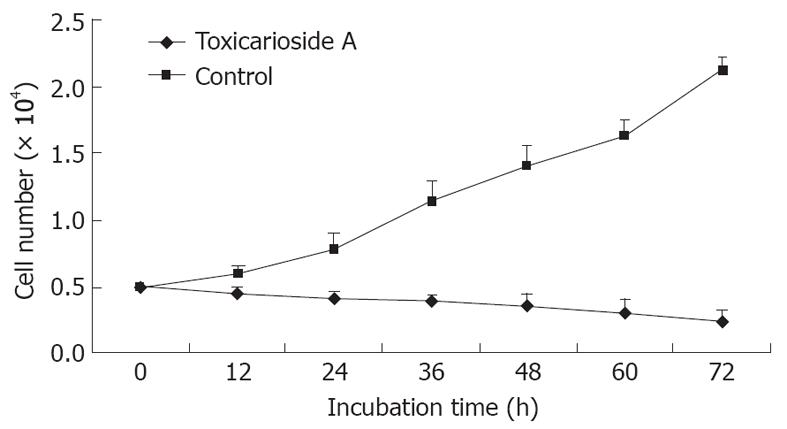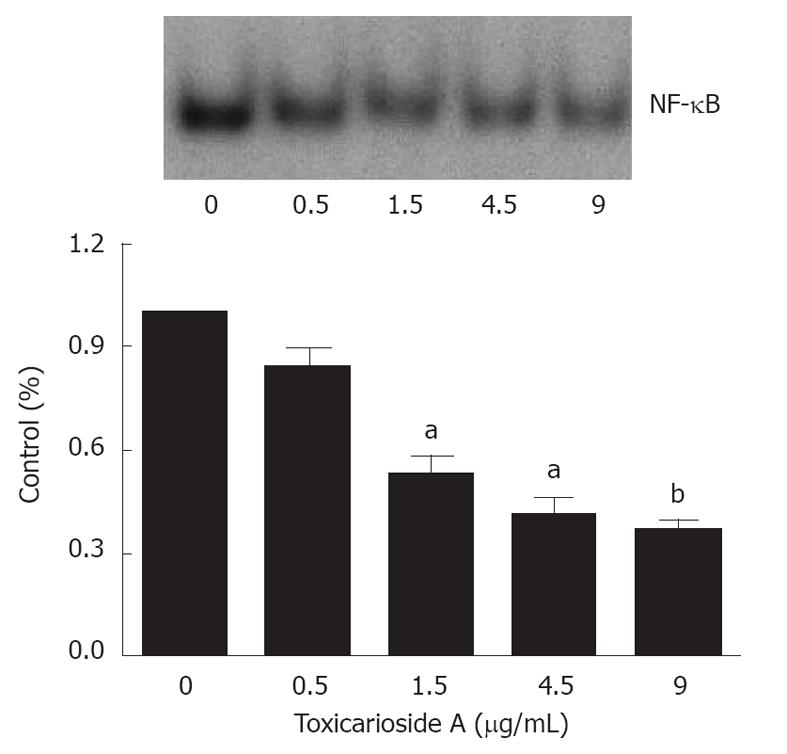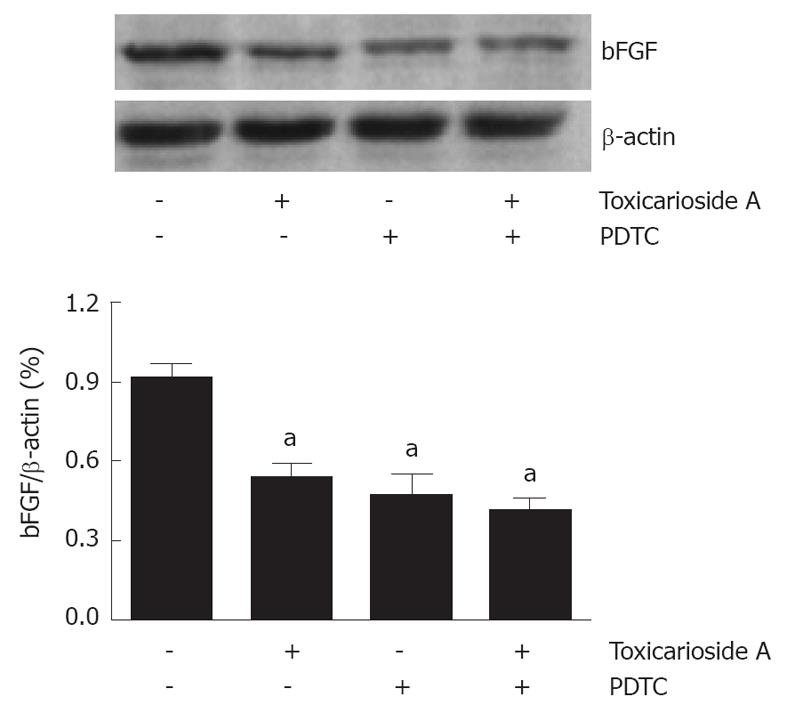Copyright
©2012 Baishideng Publishing Group Co.
World J Gastroenterol. Apr 14, 2012; 18(14): 1602-1609
Published online Apr 14, 2012. doi: 10.3748/wjg.v18.i14.1602
Published online Apr 14, 2012. doi: 10.3748/wjg.v18.i14.1602
Figure 1 The structure of toxicarioside A.
Figure 2 Effect of toxicarioside A on the growth curve of human gastric cancer cell line cells.
Cells were plated in 24-well plates at a density of 1 × 104/mL and treated with 4.5 μg/mL toxicarioside A for 72 h. The results shown are representative of three independent experiments.
Figure 3 Representative figures of cell migration and invasion in non-treated and toxicarioside A-treated human gastric cancer cell line cells.
A: Migration in the control group; B: Migration in the thetoxicarioside A-treated (4.5 μg/mL) group; C: Invasion in the control group; D: Invasion in the toxicarioside A-treated group.
Figure 4 Basic fibroblast growth factor and fibroblast growth factor receptor-1 expression in human gastric cancer cell line cells.
A: The expression of basic fibroblast growth factor (bFGF) and fibroblast growth factor receptor-1 (FGFR1) were detected using rhodamine and fluorescein isothiocyanate-conjugated mouse anti-rabbit immunoglobulin G in non-treated and toxicarioside A (4.5 μg/mL)-treated cells; B: bFGF and FGFR1 mRNA expression by reverse transcription polymerase chain reaction; C: bFGF and FGFR1 protein levels by Western blotting analysis. Results are depicted as mean ± SE of three independent experiments. aP < 0.05, bP < 0.01 vs control group.
Figure 5 Effect of toxicarioside A on nuclear factor-kappa B-DNA binding activity in human gastric cancer cell line cells.
After cells were incubated with various concentrations of toxicarioside A for 48 h, nuclear proteins were isolated and electrophoretic mobility shift assay was performed to determine nuclear factor-kappa B (NF-κB)-DNA binding activity. Results are depicted as mean ± SE of three independent experiments. aP < 0.05, bP < 0.01 vs control group.
Figure 6 Effect of inhibitor, pyrrolidinedithiocarbamate, on basic fibro-blast growth factor protein expression.
Administration of pyrrolidinedithiocarbamate (PDTC) (50 μmol/L) reinforced the toxicarioside A (4.5 μg/mL)-induced downregulation of basic fibroblast growth factor (bFGF). Results are depicted as mean ± SE of three independent experiments. aP < 0.05 vs control group.
-
Citation: Guo JL, Zheng SJ, Li YN, Jie W, Hao XB, Li TF, Xia LP, Mei WL, Huang FY, Kong YQ, He QY, Yang K, Tan GH, Dai HF. Toxicarioside A inhibits SGC-7901 proliferation, migration and invasion
via NF-κB/bFGF signaling. World J Gastroenterol 2012; 18(14): 1602-1609 - URL: https://www.wjgnet.com/1007-9327/full/v18/i14/1602.htm
- DOI: https://dx.doi.org/10.3748/wjg.v18.i14.1602














